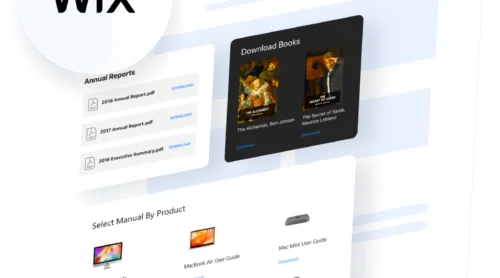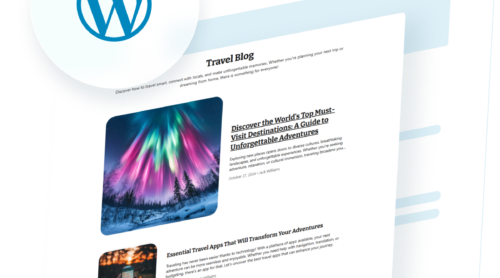Whether you’re building a YouTube search API integration, creating playlist management tools, or embedding real-time video data into your platform, understanding how the YouTube Data API works is essential. With a limited default allocation of units per day, even moderately complex operations can exhaust your quota faster than you’d expect.
In this comprehensive guide, we’ll walk you through the quota system, available operations, resource types, and optimization strategies to help you build efficient applications that work within YouTube’s constraints.
- How YouTube’s 10,000-unit daily quota works and costs
- The four HTTP methods that power all API interactions
- Which resource types support which operations
- Five proven optimization strategies to extend your quota
- Step-by-step process for requesting quota increases
Let’s dive into each of these concepts, starting with understanding where the YouTube Data API fits into your project.
Where Is YouTube Data API Applied?
The YouTube Data API serves multiple developer communities, each with distinct use cases:
Product Developers
When you’re building SaaS solutions that leverage YouTube content, the YouTube Data API is your foundation. Whether creating video analytics dashboards, social media management tools, or content curation platforms, the API provides access to YouTube’s data infrastructure.
Website Builders & Webmasters
Content marketers and web professionals use the YouTube Data API to pull YouTube content directly into their websites. Instead of manually embedding individual videos, you can create dynamic video galleries, populate playlists automatically, and keep your site’s YouTube content synchronized without manual intervention.
Researchers & Data Analysts
Academic researchers, market analysts, and data scientists leverage the YouTube Data API for large-scale video research. You can analyze trends, study audience demographics, track engagement patterns, and conduct content analysis across thousands of videos. The API provides structured data that would otherwise require extensive web scraping.
Content Creators & Studios
Though YouTube Studio offers native tools, many creators and production companies integrate the YouTube Data API into custom workflows for bulk video uploads, metadata management, and channel automation.
Understanding YouTube Quotas & Limits
Did you know? The API originally offered higher quotas (50 million units at its peak in 2013), but has been progressively reduced over the years to prevent abuse and encourage developers to optimize their applications.
This is where most developers encounter their first challenge. The YouTube Data API implements a quota system measured in units, with specific costs for each operation type.
💰 Default Quota Allocation
Projects enabling the YouTube Data API receive a default daily quota of 10,000 units per day. This quota resets at midnight Pacific Time and is tied to your specific Google Cloud project. Each project maintains a separate 10,000-unit allocation.
Key implications
- Each Google Cloud project has an isolated quota. If you manage multiple projects (test/staging/production), each gets 10,000 daily units.
- The quota is per project, not per API key. Multiple API keys within the same project share the 10,000-unit pool.
- Quota resets at midnight PT every single day, regardless of when you hit your limit. There’s no rollover to the next day.
- If you exceed quota at 11 PM PT, you’re blocked for only 1 hour until midnight reset. If you exceed at 1 AM PT, you’re blocked for 23 hours.
- Quota consumption is tracked by the authenticated project, not by individual users of your application.
📊 Quota Cost Structure
The YouTube Data API uses a tiered quota system where different operations consume different amounts of units. Understanding this cost structure is essential for predicting your daily quota consumption.
| Operation Type | Cost | Examples & Context |
|---|---|---|
| Read (GET) | 1 unit | Retrieving video details, channel metadata, statistics, comments, playlists, search results. This includes any operation that only reads existing data without modification. |
| Write (POST/PUT) | 50 units | Creating playlists, updating video metadata (titles, descriptions, tags), adding comments, inserting channel sections. Each modification operation costs 50 units regardless of what’s being modified. |
| Video Upload | 1,600 units | Uploading a new video file to YouTube via the API. This includes video transcoding, storage allocation, and indexing. Uploading a single video consumes 16% of your daily quota. |
| Thumbnail Upload/Update | 50 units | Uploading a custom thumbnail image or updating an existing one. Grouped with other write operations in terms of cost. |
| Caption Insert/Update | 200 units | Adding new captions or subtitle tracks to a video, or updating existing ones. More expensive than basic writes due to parsing and indexing requirements. |
Important quota mechanics
- All costs accumulate: Whether a request succeeds or fails, you pay the full quota cost. An invalid request that returns an error still costs 1 unit minimum.
- Batching reduces costs: Requesting 5 videos in one API call costs 1 unit total. Requesting them separately costs 5 units. Batch intelligently to save quota.
- Response data has hidden costs: When you Insert a resource, the API returns the newly created object. This return data incurs additional quota costs beyond the base 50 units for the write operation.
- Pagination costs: Each page of results is a separate request. Getting comments from 10 pages costs 10 units. Optimize pagination with appropriate page sizes.
🔍 What Can You Actually Do With 10,000 Units?
The quota calculator on Google’s Developer Console helps estimate costs, but here are practical scenarios:
Scenario 1: Video Analytics Dashboard
- Retrieve 50 channel statistics: 50 units
- Fetch the 50 most recent videos: 5,000 units (100 per channel listing)
- Get comments on those videos (10 pages): 10 units
- Daily cost: ~5,060 units per day = budget remaining for 2 more channel analyses
Scenario 2: Video Research Tool
- Search for 100 videos: 10,000 units (100 per search)
- Daily result: Exactly one search before quota exhaustion
Scenario 3: Pure Data Retrieval
- Retrieve 10,000 individual video details: 10,000 units (1 per video)
- This represents the theoretical maximum for simple read operations
HTTP Methods: Four Core Operations
The YouTube Data API uses standard REST* principles with four HTTP methods to interact with resources. Each method has specific purposes and may not be available for every resource type.
*REST stands for “Representational State Transfer” and describes how clients (like browsers, mobile apps, or other services) should talk to servers in a simple, standard way. Instead of calling “actions”, REST treats everything as resources (users, orders, posts) that you access and manipulate via URLs.
1. List (GET) – Retrieve Data
The List method returns collections of resources matching your request parameters. This is the most commonly used operation for reading YouTube data.
Use cases
- Search for videos using keywords (YouTube search API functionality)
- Retrieve channel upload lists
- Fetch playlist items
- Get video comments and comment threads
- List channel sections and subscriptions
Quota cost: 1 unit per request
Example: Fetch all videos uploaded by a specific channel using the channel’s uploads playlist, or search across all of YouTube for content matching specific criteria.
2. Insert (POST) – Create Resources
The Insert method creates new resources on YouTube and optionally sets metadata like video titles, descriptions, and category information.
Use cases
- Upload new videos to a channel
- Create playlists and playlist collections
- Add captions to videos
- Insert comments on videos
- Add channel sections
- Set custom thumbnails
Quota cost: 50 units per write operation + additional cost for returned data
Important: Creating a resource through Insert also returns the newly created resource (like returning the playlist object after creation), which can incur additional quota costs beyond the base 50 units.
3. Update (PUT) – Modify Existing Resources
The Update method modifies existing resource properties without creating new items.
Use cases
- Change video titles, descriptions, or category
- Update playlist metadata
- Modify video privacy settings
- Update captions content
- Change channel branding settings
Quota cost: 50 units per update operation
Note: Not all resources support updates. For instance, you can’t “update” a video search result – you can only retrieve it.
4. Delete (DELETE) – Remove Resources
The Delete method permanently removes resources from YouTube with no possibility of recovery.
Use cases
- Delete video captions
- Remove playlist items
- Delete comment replies
- Remove channel sections
Quota cost: 50 units per delete operation
Caution: Deletion is typically permanent. Some resources like videos require additional authentication through YouTube Studio, not the API alone.
Complete Resource Type Reference
The YouTube Data API provides structured data through resource types. Each resource represents a different type of YouTube content or metadata, and each supports different combinations of List, Insert, Update, and Delete methods.
Below are supported resource types and available interactions:
| Resource | List | Insert | Update | Delete | Purpose |
|---|---|---|---|---|---|
| Activity | ✓ | ✓ | ✓ | ✗ | User engagement events (likes, favorites, watch history) |
| Caption | ✓ | ✓ | ✓ | ✓ | Video captions and subtitle tracks |
| Channel | ✓ | ✗ | ✗ | ✗ | Channel information and statistics |
| ChannelBanner | ✗ | ✓ | ✗ | ✗ | Channel banner image URLs |
| ChannelSection | ✓ | ✓ | ✓ | ✓ | Channel custom sections (latest uploads, playlists, featured) |
| Comment | ✓ | ✓ | ✓ | ✓ | Video and channel comments |
| CommentThread | ✓ | ✓ | ✓ | ✗ | Comment threads containing parent and reply comments |
| GuideCategory | ✓ | ✗ | ✗ | ✗ | Content categories defined by YouTube (e.g., trending topics) |
| i18nLanguage | ✓ | ✗ | ✗ | ✗ | Supported UI languages for localization |
| i18nRegion | ✓ | ✗ | ✗ | ✗ | Supported regional content preferences |
| Playlist | ✓ | ✓ | ✓ | ✓ | User-created video collections |
| PlaylistItem | ✓ | ✓ | ✓ | ✓ | Individual videos within playlists |
| Search Result | ✓ | ✗ | ✗ | ✗ | Videos, playlists, or channels matching search queries |
| Subscription | ✓ | ✗ | ✗ | ✗ | User subscription information |
| Thumbnail | ✗ | ✗ | ✗ | ✗ | Video thumbnail image data (read-only) |
| Video | ✓ | ✓ | ✓ | ✓ | Video metadata, statistics, and content details |
| VideoCategory | ✓ | ✗ | ✗ | ✗ | YouTube’s official video categories (Music, Gaming, etc.) |
| Watermark | ✗ | ✗ | ✗ | ✗ | Channel watermark images (read-only) |
Not every resource supports every operation – always check the compatibility matrix before building features that rely on Insert, Update, or Delete methods.
Key Resource Patterns
Read-Only Resources: Thumbnail and Watermark are read-only resources. You can retrieve their data but can’t create, modify, or delete them through the API.
Channel Restrictions: The Channel resource only supports List operations; you can retrieve channel information but can’t create or modify channel properties through this resource. Channel branding changes require the Channel.brandingSettings resource instead.
Searchable Resources: Only the Search Result resource supports the List method for broad searches. To search across YouTube, you query the search resource rather than iterating through video resources.
Practical Implementation: Authentication Methods
Before making any API requests, you need to authenticate. YouTube Data API v3 supports two authentication approaches, each suited for different scenarios.
🔑 API Key Authentication
An API key identifies your application and provides access to public data only. No user login required.
When to use
- Accessing public video information, channel statistics, or comments
- Building applications that don’t need to modify user accounts
- Rapid prototyping and development
How to obtain
- Go to Google Cloud Console
- Create a new project
- Navigate to “APIs & Services” → “Enable APIs”
- Search for and enable “YouTube Data API v3”
- Go to “Credentials” and click “Create Credentials” → “API Key”
- Copy your API key
Quota: Uses your shared 10,000-unit daily allocation
🔐 OAuth 2.0 Authentication
OAuth 2.0 allows your application to request access to private user data or perform write operations on behalf of the user (with their permission).
When to use
- Uploading videos on behalf of users
- Accessing private playlists or watch history
- Modifying channel metadata or settings
- Creating or managing playlists for users
How it works
- User clicks “Sign in with Google” in your app
- Your app redirects them to Google’s authorization page
- User grants permissions (you define the scopes requested)
- Google returns an authorization code
- Your app exchanges the code for an access token
- You use the token for API requests
Quota: Also uses the same 10,000-unit allocation, but requests are attributed to the authenticated user’s project
Full details are available in Google’s YouTube Data API authentication guide.
Advanced Operations: Special Use Cases
While the four basic methods handle most needs, YouTube offers specialized APIs and operations for specific scenarios.
📈 YouTube Reporting API: Deep Analytics
The YouTube Reporting API provides access to granular analytics metrics beyond basic statistics, including:
- View metrics: Views, engaged views, watch time
- Engagement metrics: Likes, comments, shares, subscriber changes
- Revenue data: Estimated revenue, ad revenue by type
- Audience demographics: Age, gender, geographic location
- Retention data: Which parts of videos viewers watch completely
This is ideal for content creators building custom analytics tools or researching channel performance trends over time.
🎥 YouTube Live Streaming API: Real-Time Broadcasting
The YouTube Live Streaming API enables applications to manage and control live broadcast events, enabling applications to:
- Schedule and manage live broadcasts programmatically
- Associate video streams with broadcast events
- Insert cuepoints for automated transitions
- Manage live chat messages in real-time
- Control broadcast states (testing, live, ended)
This resource is essential for streaming platforms, event management tools, and interactive applications.
📊 YouTube Analytics API: Performance Tracking
The YouTube Analytics API provides real-time performance data through custom report queries, allowing you to:
- Track video performance metrics across time periods
- Segment data by demographics, traffic source, or device
- Compare performance across multiple videos
- Identify which content attracts which audience segments
These capabilities make the Analytics API essential for creators and platforms seeking to understand content performance and audience behavior at scale.
Optimizing Your API Usage: Save Quota & Improve Performance
With only 10,000 daily units, optimization isn’t optional – it’s essential. Here are several proven strategies to reduce quota consumption and improve response times:
Use ETags for Conditional Requests
ETags are special identifiers that represent specific versions of resources. When combined with conditional request headers, ETags prevent unnecessary data transfers when content hasn’t changed.
How it works:
- First request: API returns data + ETag value
- Subsequent request: Include
If-None-Match: {ETag-value} - If data unchanged: Server returns 304 Not Modified (0 units cost)
- If data changed: Server returns 200 OK + new data + new ETag
Benefit: Dramatically reduces bandwidth and potential quota usage for frequently accessed static data. Polling scenarios become much more efficient.
Enable GZIP Compression
GZIP uses an algorithm to find repetitive patterns in data and replaces them with shorter codes. Think of it like shorthand: instead of writing the same phrase repeatedly, you write it once and refer back to it.
Why it matters for APIs:
- Smaller file size: Compresses responses by 50-80%, meaning less data transmitted
- Faster download: Smaller files download quicker
- Less bandwidth: Both your server and client use less bandwidth
- Automatic: Most HTTP libraries (Python, JavaScript, etc.) handle it automatically
How do you implement it? Add the Accept-Encoding: gzip header to API requests. Most HTTP libraries handle this automatically. It requires additional CPU on client side for decompression, but typically negligible.
Request Only Necessary Fields
YouTube API responses can be large, containing properties your application doesn’t need. The fields parameter lets you request only specific fields.
Instead of: /videos?id=VIDEO_ID
Use: /videos?id=VIDEO_ID&fields=items(id,snippet(title,description),statistics(viewCount))
This reduces response size and can be combined with ETag optimization for maximum efficiency.
Batch Process Requests
If you need to fetch multiple videos, playlists, or channels, the YouTube Data API allows you to specify multiple IDs in a single request:
text/videos?id=ID1,ID2,ID3,ID4,ID5&part=snippet
This fetches 5 videos in a single API call (1 quota unit) instead of 5 separate calls (5 quota units). Processing batches of up to 50 items at once provides significant savings.
Implement Application-Level Caching
Cache API responses in your application with appropriate TTL (time-to-live) values:
- Static content (video titles, descriptions): 24 hours
- Dynamic content (view counts, comment counts): 1-6 hours
- Real-time content (live chat messages): 5-30 seconds
This dramatically reduces repeated requests for the same data.
Requesting a YouTube API Quota Increase
When your application needs to scale beyond 10,000 units daily, you can request a quota increase from Google. This process requires demonstrating that your application complies with YouTube’s Terms of Service.
📝 Step-by-Step Quota Increase Request
Step 1: Prepare Your Application
- Implement all optimization strategies mentioned above
- Document your legitimate use case
- Test thoroughly with current quota limits
Step 2: Access the Quota Dashboard
- Go to Google Cloud Console – IAM & Admin → Quotas
- Select your Google Cloud project
- Filter for “YouTube Data API v3”
- Click on “Queries per day” quota
Step 3: Complete the Quota Request
- Click “Edit Quotas”
- Enter your requested quota increase amount
- Fill out the request form including:
- Contact information
- Description of your application
- OAuth Client ID (if applicable)
- Explanation of why you need the increased quota
- Estimated daily API usage figures
- Number of end users who will access the API through your app
Step 4: Submit & Wait
- Submit the form and wait for Google’s review (typically 1-3 business days)
- Google will assess your request based on compliance with YouTube Terms of Service and use case legitimacy
✅ Quota Increase Criteria
Google reviews quota requests holistically, evaluating both your application’s legitimacy and your understanding of the API. Your request competes with thousands of others, so standing out requires demonstrating genuine need and responsible usage patterns.
Factors that strengthen your request
- Clear, specific use case description: Explain exactly what your application does and why it needs YouTube data. Generic descriptions (“video app”) get rejected. Specific ones (“real-time analytics dashboard for content creators tracking engagement”) stand out.
- Demonstrable user base or business need: Show that real users depend on your application. Include monthly active users, customer count, or revenue metrics. Google wants to know your increased quota will serve an actual audience, not a theoretical one.
- Compliance with YouTube ToS: Explicitly state you won’t scrape, republish without permission, or violate YouTube’s terms. Google scrutinizes this heavily. Any hint of abuse or terms violations results in automatic denial.
- Realistic quota estimate based on actual calculations: Show your math. “We have 5,000 daily users, each performing 3 searches = 15,000 units needed” is compelling. “We need 1 million units because we’re popular” is not.
- Track record of responsible API usage: If your application has been using the API for months without hitting limits or violating terms, mention it. Long-term, compliant usage demonstrates you’re trustworthy.
- Quota increases are free. Google doesn’t charge per unit above your limit.
- Quota is tied to your Google Cloud project, not your account. Each project has its own allocation.
- You cannot change the “Queries per minute per user” limit – only the daily limit can be increased.
- If your initial request is denied, Google provides guidance on what to improve.
FAQ: YouTube API Questions & Troubleshooting
Here are answers to the most common questions about the YouTube Data API v3:
What's the difference between YouTube Data API and YouTube Reporting API?
Can I upload videos using the YouTube Data API?
Do I need OAuth 2.0 or is an API key sufficient?
How do I avoid exceeding my quota?
What happens when I exceed my quota?
Are there any alternatives to the official YouTube Data API?
Next Steps: Build Efficient YouTube Integrations
The YouTube Data API v3 is powerful but unforgiving with quotas. Success requires three things: understanding how quotas work, optimizing aggressively, and scaling strategically when you’re ready.
Whether you’re displaying videos, analyzing performance, or managing content, these principles apply universally. The difference between a sustainable application and one that fails after launch often comes down to quota planning. Plan thoroughly, build efficiently, and your application will scale without surprises.






